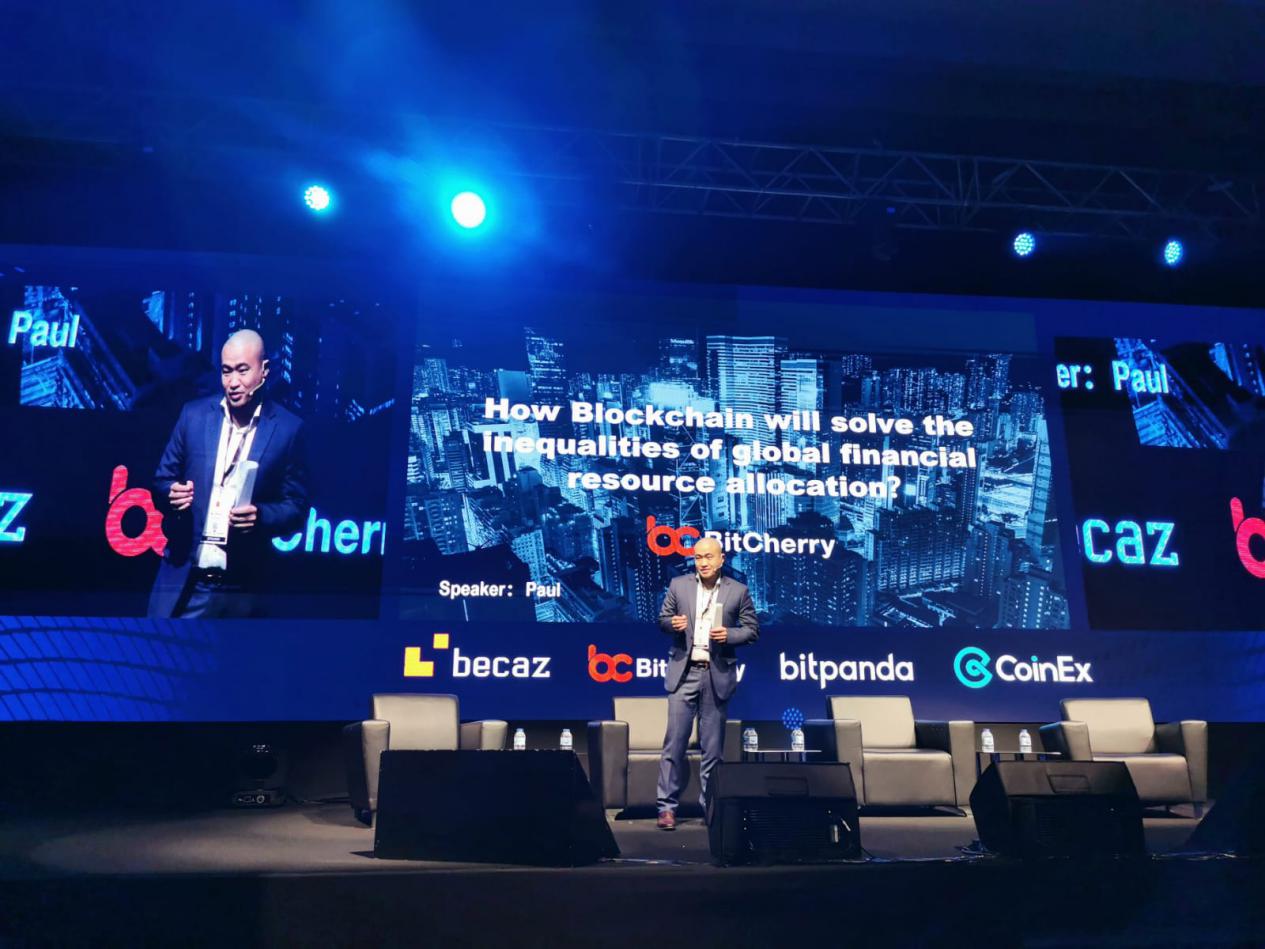
2018-12-1 09:49 |
Bringing a new gold standard on the blockchain requires understanding of, and adaptation to, blockchain properties. Find out more about the fundamentals in this article.
From the CMC editorial desk: We’ve heard lots about gold-backed tokens in recent times, so we wanted an explanation of the basis of these tokens. We turned to Digix (DGX), one of the first ICOs on Ethereum, to explain what it all means and how to think about gold standards on blockchain.
The gold standard in the pastGold has been used as a store of value and medium of exchanges for thousands of years, gaining widespread acceptance and use during the Middle ages. Up until the 1930s, the classical gold standard formed the basis of the global monetary system in place at the time.
One of the most significant events in the history of the gold standard was the fall of the Bretton Woods in the 1970s, and the termination of the peg between the United States Dollar (USD) and gold. With these developments, the international monetary system moved to a purely fiat currency system – fiat, which are backed by the worth and legitimacy of the governments issuing the legal tender. The rate of issuance, and value of the currencies, are controlled by the governments and central banks that print new notes, which can change depending on their fiscal and monetary policies over time.
The problems with removing a stabilization mechanism that uses goldAs witnessed in the global financial crisis of 2008, major central banks have the power to print trillions worth of new fiat monies ultimately not backed by any tangible value or asset. They may have good reasons, such as the bail-out of troubled institutions, global competitiveness, or other macroeconomic reasons.
The result of this is inflation, which can spiral into financial crises globally. In developing countries, especially in regions such as Africa and South America, we see many examples of hyperinflation due to an uncontrolled supply of fiat currency in the market. This eventually impedes the livelihood of the average individual. Another example from history was the hyperinflation of the German Mark in the Weimar Republic, when an individual’s cash became worthless overnight.
Hence, with fiat currencies, there is heavy centralization of power with governments, especially when they have unbridled power to print money and to unilaterally decide whether to peg or unpeg any currency to gold. When currencies were pegged to gold, these were problems that could be avoided to a larger extent, since gold has an international value on the marketplace, and a limited supply.
How the blockchain created a P2P system to solve the problems with fiat centralizationVirtual currencies began as an alternative private system of payments independent of the traditional financial system. As would be familiar to many by now, Bitcoin began as the first fully functional mode of peer-to-peer (p2p) payments on the blockchain. More importantly, it presented a decentralized system governed using a consensus algorithm, thus ensuring that all transactions on the blockchain are accurately recorded, and no double-spending can occur.
The message on the genesis block of Bitcoin also seems to reference the current fiat system: “03/Jan/2009 Chancellor on brink of second bailout for banks,” pointing to the perils of having a central bank exercising their control of fractional reserves to bail out too-big-to-fail banks.
With the advent of Bitcoin, we then had a new p2p transactional system that stores information in a public, decentralized and immutable system. This began as the premise for other virtual currencies to emerge in the space that we see today.
Solving the problem of volatility in virtual currenciesHowever, the huge speculative bubble in virtual currencies has led to immense volatility. A double-edged sword, volatility creates potential for huge returns in a short period, while also presenting the possibility of having entire fortunes wiped out at the same time.
Potential solution 1: StablecoinsVolatility basically undermines counterparty expectations when the recipient ends up with a transaction value worth much less or much more than intended by the giver in p2p transfers. As a result, there has been increasing demand for tokens which have consistent prices with predictable spreads – or better known as stablecoins (for more background on stablecoins, read this article by pioneer Haseeb Qureshi.) Stablecoins serve primarily as a short term trading capital preservation tool against the extreme volatility of cryptocurrencies.
Some broad classifications of stablecoins include fiat-backed (USDT / TUSD), algorithmic (Basecoin or Basis) and virtual currency collateralized (DAI / Reserve Currency). These stablecoins are pegged to 1 USD each with their designated technologies.
Fiat-backed token projects usually put forth the claim that all issued tokens are backed by equivalent USD amounts that are held in independent fiduciary managed escrow accounts. The reliability of the underlying holdings is ascertained through audit opinions and reviews.
Algorithmic projects are broadly based off smart contracts which systematically maintain a stable price by controlling the demand and supply of the circulating coins. This, in essence, is similar to how central banks are intended to work, but is facilitated by smart contracts on the blockchain.
Virtual currency and other asset collateralized stablecoin projects work by taking major virtual currencies such as ether, or other asset-backed currencies and storing them in a centralised debt pool (CDP), and issuing the equivalent of stablecoins based on a collateral ratio. For example, if 1 ETH = USD 500, and the collateral ratio is 200%, then USD 250 worth of stablecoins will be issued for every ETH deposited into the CDP.
Potential solution 2: Gold-backed tokensSome have also suggested that gold-backed tokens can serve as a stablecoin variety. However, given that usual stablecoins represent the equivalent of USD 1 in a digital format that is freely tradeable, gold-backed tokens – in stark contrast – veer away from the conventional stablecoin narrative.
While a gold-backed token may act like a stablecoin, as gold markets are stable relative to other asset markets, gold itself can be considered to have appreciation value in its own right as an investment asset, making digital gold an attractive option to hold.
General appreciation of gold prices over a 40+ year period
Source: LBMA
Traditional gold investments usually take the form of share investments into gold ETFs, or acquisition of physical gold bars. With blockchain, its inherent attributes bring about many advantages to the transfer of gold. The public ledger and full public access to all documentation (if stored on a decentralised public file sharing database such as InterPlanetary File System) will minimize fraud risks that would have been present in an otherwise physical supply chain of asset custody.
A number of projects are working on gold-backed stablecoins, such as Digix, HelloGold and GoldMint. At Digix, we designed the gold-backed token to possess a proprietary suite of smart contracts, named the Proof of Provenance (PoP) protocol. It utilizes IPFS and Ethereum, ensuring that DGX tokens are always minted on a proportional basis of 1:1, where 1 token is equivalent to 1 gram of physical gold held in a secure vault. To ensure that tokens are indeed gold-backed, DGX is created only after the purchased gold has been delivered to the independent custodial vault. The delivered gold is subject to verifications at the point of deposit, as well as at quarterly audits by independent auditors. Hence, there will never be more DGX tokens created than the total weight of physical gold bullion backing them.
The purpose of digital goldGold-backed tokens hence act as a bridge between the real world and the virtual currency world by bringing a safe haven store of value onto the blockchain. As gold has a value that is readily understood and accepted by all cultures and demographics, barriers to entry to the retail gold market are reduced for the average person, who is now able to hold gold-backed tokens in divisible form. There is a plethora of use cases for both individuals and institutions: Portfolio diversification, wealth preservation, payments, collateralization for lending and other financial products, and more.
However, in interfacing with the real world, there is inevitably friction that needs to be smoothed out, and the main conundrum is a legal one: How do transfers of asset tokens map to ownership transfers of assets, and do these transfers equate to actual transferences of legal titles? (This will require us to actually dissect the complicated legalities involved, and the evolution of the regulatory system to better determine the legal status of asset tokens – something far beyond the scope we can present here.)
A new gold standard of the presentWhile gold is one of the first few key examples being represented on the blockchain, physical assets are just one type out of many possible ones that could be tokenized. A 2017 NASDAQ article covers an entire range of assets, from intangible rights (think intellectual property rights such as copyrights and carbon credits) to portfolio assets (securities and packaged assets) to limited rights (licences).
For now, digital gold has presented itself as a working, initial proof-of-concept of putting an asset on the blockchain. Beyond bringing back the glory of the gold standard of the past, it is now in a different fashion that allows secure and frictionless p2p transfers and ownership. In time to come, digital gold might be instrumental in bridging the old financial system and the new digital system, with its utility unlocked for secure payments and all other creative uses we have yet to dream up.
Written by: Geoffrey Cher, Huiling Xie (Business development team at Digix)
About DigixDigix is a Singapore based asset tokenization company incorporated in 2016, with physical gold on the Ethereum blockchain, DGX, being its first product. Digix has been awarded numerous Fintech accreditations and its CEO, Kai C Chng, was recently invited to speak at a Blockchain parliamentary session that was organized by the European Parliament. Although Digix has strong roots in the APAC region, its brand name has a global reach.
Digix conducted the first ever onchain crowdsale on Ethereum in March 2016, where it raised more than 460,000 ETH.
You can engage with the Digix community on Twitter and Discord.
The post What it means to bring a new gold standard onto the blockchain appeared first on CoinMarketCap.
origin »Time New Bank (TNB) на Currencies.ru
|
|











